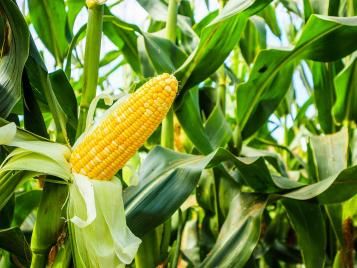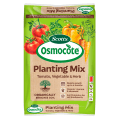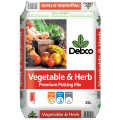

Growing Sweet Corn in Australia
Sweet Corn, or maize, won't really grow as high as an elephant's eye, but it will be sweet, tender and delicious - especially when cooked as soon as it is picked. Plenty of sun and dry weather are needed for optimal corn growing conditions and to set cobs full of well-formed kernels.
Sweet corn varieties
Hybrid Fl varieties produce the sweetest kernels. Popular varieties include ‘Breakthrough’, ‘Golden Bantam’, ‘Honey and Cream’, ‘Early Gem’, ‘Early Chief’ and ‘Honeysweet’.
The latest plant breeding has produced enhanced sweetness, with ‘Supersweet’ being the forerunner.

What you’ll need to start growing sweet corn
Growing sweetcorn doesn’t require complicated equipment. Here’s what you need:
- Garden fork and spade
- Trowel
- Compost or soil improver
- Vegetable and herb fertiliser
- Liquid feed
- Sweet corn seeds
How to grow sweet corn
Cultivation
For growing sweet corn, choose a position that receives lots of sunshine and is sheltered from strong winds.
Sweet corn will grow in most soils, providing it is well drained, but holds plenty of moisture. Before sowing, improve the soil so that it is rich in nutrients and organic matter by digging in some well-weathered manure, compost or soil improver, then add a good dressing of a good vegetable and herb plant food.
Sowing sweet corn
Because sweet corn is pollinated by wind transfer of pollen, the plants should be grown together in a square or rectangular block, rather than a single row or dotted around the garden.
If you wait until after the last frost of early spring, you can sow seeds directly in the ground where you want it to grow. Sweet corn is one crop that seems to do better when direct-sown, rather than seeds being sown into trays for transplanting as seedlings.
Sow seeds at spacing of 45cm (18 in) apart in the block.
How to care for sweet corn
Water the soil thoroughly during prolonged periods of dry weather; this is vital when the plants are establishing and when they are flowering and the cobs swelling.
Liquid feed every fortnight when the plants start to flower and the cobs begin to swell.
If roots appear at the base of the stem, cover them with soil to improve plant stability in wind.
You can tap the plants when the male flowers (tassels) open to help pollination, as poor pollination will result in poorly filled cobs.
How to harvest sweet corn
When the silks (female flowers) on top of the cobs have turned chocolate brown, test the kernels for ripeness. Pull back some of the leaves that cover the cob and press one or two kernels with a thumbnail. If the content is creamy then it is ripe to eat. If the content is clear, the cob is unripe, so wait. If the content is solid, you've left it too long.
Cook as soon as possible after picking. Fill a pot with plain water (no salt) and you will taste perfect sweet corn! Avoid picking more than you need, since cobs that are left in the fridge for a day or two will gradually lose their sweetness.
Common sweet corn pests
| Birds |
Birds peck at the leaves of young sweet corn seedlings, often destroying them.
|
| Slugs and snails |
Slugs and snails will eat young sweet corn seedlings, and can be identified by the slime trails that they leave, as well as the damage they do. As the seedlings grow taller they are less at risk from slugs and snails.
|
FAQs
How long does corn take to grow in Australia?
Corn typically takes 70-100 days to grow in Australia, depending on the variety and growing conditions. Corn matures in about 3-4 months, with the best results when grown in warmer months. The corn kernels are ready for harvest when they are plump, and the husks turn brown, usually in late spring to summer.
When is the best time to grow corn in Australia?
The best time to plant corn in Australia is from late spring to early summer (October to December). Corn requires warm temperatures to thrive, ideally between 18-30°C. For most regions, it’s best to plant after the last frost to ensure the soil is warm enough for optimal germination and growth.
How to grow corn from seed?
To grow corn from seed, plant seeds 2-3 cm deep in well-drained soil, spacing them 20-30 cm apart. Choose a sunny location for the corn seed and keep the soil moist, but not waterlogged. Corn grows best in temperatures above 18°C in Australia, so plant seeds after the last frost in late spring to early summer for optimal results.



